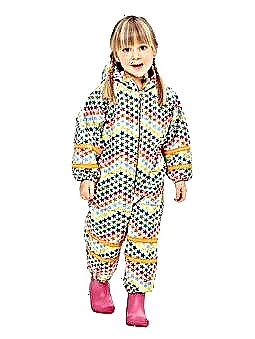We often pay attention to men's shirts. They are whiter, and the quality of the fabric is better, and the prints are more interesting. And if such one is hanging in the closet idle, then I definitely want to pick it up and alter myself!

I love giving things a second chance. Especially those products sewn from good fabrics, but the initial embodiment of which has lost relevance or the thing is banal tired. And then simple pullovers are obtained from warm dresses, blouses and tops from summer ones, and short ones from long ones.

But this time, my husband’s shirt was made from linen with a beautiful print.
For alteration, I chose a model of a blouse-shirt from the November magazine Burda Style:
- Special offer

- 1
- 2
- 3
- 4
Step 1


Disassemble the shirt for details, carefully cutting off the allowances exactly according to the sewing stitches.

Leave the bar for the clasp original, unchanged (we will not cut and cut a new one). The clasp in this case will remain on the male side.

Cut the sleeve cuffs and stand-up collar.
Open the buttons.
Iron the parts.
Step 2
Pick the right pattern.
Step 3. Shelves of the shirt


Fold the paper part of the shirt shelf along the fold line of the one-piece fastener strap.

Lay out the right shelf of the shirt on a flat surface.

Overlay the detail of the paper pattern of the shelf, precisely aligning the fold of the pattern and the edge of the plank.

Cut out the right shelf of the shirt.

In the same way, cut out the left shelf of the shirt.
Step 3
Cut out the back.
Step 4

Cut out the details of the sleeves.
If the cuts of the sleeves on the pattern coincide with the original cuts without shifting the part relative to the paper pattern (i.e. the fabric is enough), then they can be saved by cutting a long sleeve, the bottom of which can be processed with narrow or wide cuffs.
In this case, the section of the sleeve on the pattern did not coincide with the original section, so I cut this part of the sleeve and cut the sleeves to the remaining length.
Step 5

Cut out the details of the coquette.

In this case, the outer yoke is composite, made of the original fabric.
The inner part of the coquette is from another fabric.
Step 6

Cut out the details of the collar.
In my case, the fabric was only enough for a stand-up collar. The outer part of the stand-up collar is cut from the original fabric, the inner one from another fabric.

Duplicate the outer part of the stand-up collar.
Step 7


Slip the details of the shelf and back along the side seams to the mark of the cuts.

Make side seams to the cut marks.

Overlap the seam allowances on the overlock together, iron, and then iron on the back.
Step 8
Perform a yoke.


Pin the outer back yoke to the back with the front side to the front side, the inner yoke back to the front side to the wrong side.
Sew coquettes together. Iron the seam.



Unscrew the coquette up and iron it.
Sew a yoke.
Next, grind the yoke to the upper sections of the shelves in one of the ways that seems most convenient to you:
Pure work: how to sew a double yoke on a shirt blouse
How to make a yoke back in a shirt blouse
Step 8
Fold the sleeve details with the front side inwards, aligning the slices exactly.
Chip and grind.
Process the slices on the overlock, iron, and then iron back.
Step 9

Align the sleeves to stitch along the sleeve.

Insert the sleeves into the armholes, aligning the marks.

Fit the sleeves around the ridges.

Stitch sleeves in armholes.
Process the slices on the overlock.
Iron the seams.
How to fit a sleeve
Step 10

Fold the details of the stand-up collar with the front sides to each other, chip.


Stitch the front short and upper sections, starting / ending the line exactly at the marked line of the seam of the stitching of the collar.

Cut the seam allowances close to the stitch.

Turn the collar out, sweep it and iron it.

Insert the outer part of the stand-up collar into the neck and bore.
Stitch in.

Iron the allowance inside the collar. In the places of fillet cut.

Tighten and lower the lower section of the inner part of the stand-up collar.

And then sew it from the front, just falling into the seam of the outer collar. Or sew it from the wrong side over the seam of attaching the outer collar manually with a blind seam.
Basic Hand Stitches
Step 11
Slices of sleeves and allowances for hemming the bottom of the shelves and the back of the shirt process on the overlock.
Iron the seams.



Take allowances on the wrong side, the width of the overlock stitch, iron. And then once again unscrew to the wrong side to the same width, bast, iron and stitch.
Sew across the upper ends of the side cuts.
Remove the mark.
Step 12
Sew on the buttons.


Done!
The author of the master class and photo: Julia Dekanova



